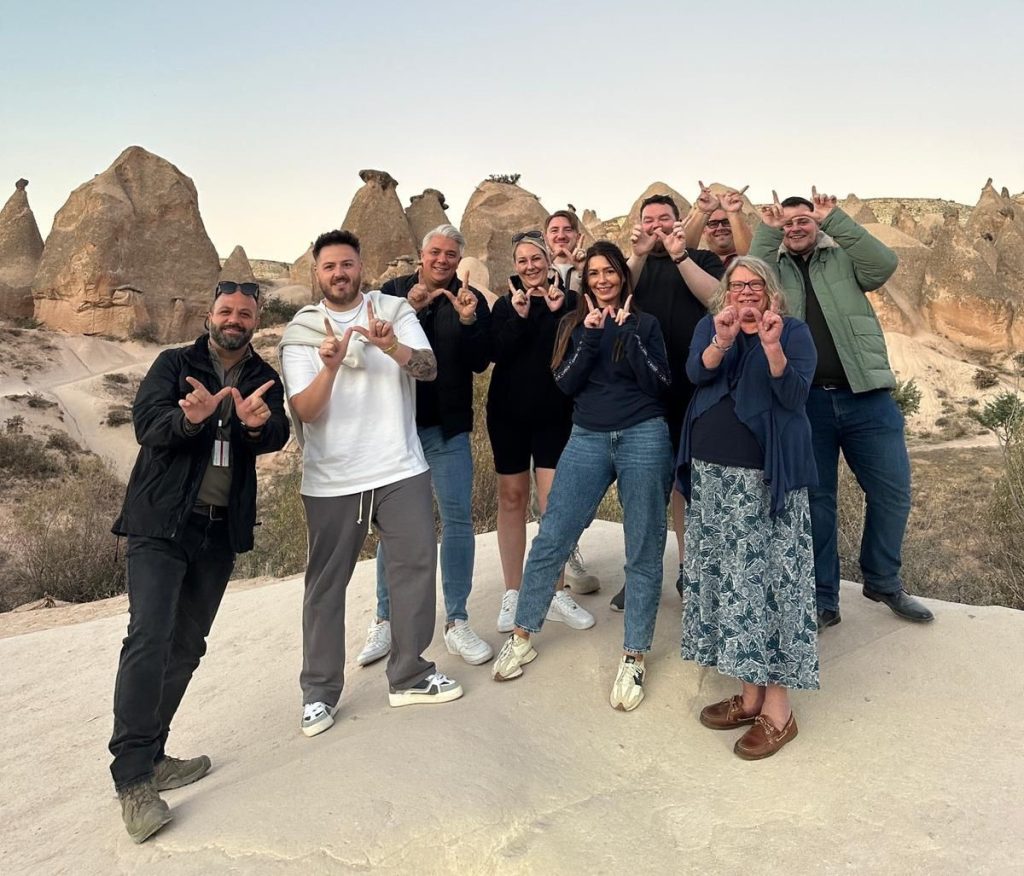Thankyou to Chris & All At WendyWu for an amazing trip to Istanbul and Cappadocia.
I arrived in the beautiful city of Istanbul which is viewed as one of the World’s greatest cities, and certainly one of the most influential in the history of the last two millennia, Istanbul: a vibrant, modern metropolis built around a historical heart where Roman, Byzantine and Ottoman treasures compete for the limelight.
The next day, we began the exploration of fascinating Istanbul. I visited remains of the Hippodrome, once decorated with marble statuary and columns, in its heyday it was the site of chariot races and the focal point of the city’s civic life. Adjacent to the Hippodrome is the Blue Mosque, the light which shines through over 2,500 stained glass windows and reflects onto the dark blue Iznik tiles within. A masterpiece of woodworking and calligraphy, the mosque complex is also home to the tomb of Sultan Ahmet I. We continue the tour with Hagia Sophia Complex, which is considered one of the eight wonders of the world. Our next stop is the Underground Cistern, the largest of the many underground cisterns built during the Byzantine Empire to supply the city with water.
We then visited the massive compound of the Topkapi Palace, it is built around four courtyards that lead into one another. I viewed the many treasures of the Ottoman sultans including fine porcelains, gem encrusted objects, traditional armour and imperial costumes, stunning tile work and sacred relics of the Christian and Islamic faiths. I went to the Spice Bazaar, the second largest covered market in Istanbul, the best place to buy Turkish delight, dried fruit, exotic spices and herbs. During the visit to the Spice Market, I had a short break at Ali Muhiddin Haci Bekir’s shop – the inventor of Turkish delight. To the right is Tahtakale, the old hardware district, with its famous 16th-century Rüstem Pasha Mosque. We then boarded the private boat for a scenic cruise on the historic Bosphorus waterway that straddles two continents. Sail past Rumeli Fortress, a medieval hilltop fortification; the eclectic blend of European and Ottoman influences that grace the grand facade of the Dolmabahce Palace; and elegant Beylerbeyi Palace, the former summer residence of the sultan. I observed how the two cultures were influenced by each other throughout the years.
I was transferred to Istanbul Airport for the flight to Cappadocia. During the afternoon, I visited Ihlara Valley. The drive to Ihlara Valley is a 10 miles long gorge cut into volcanic rock following eruptions of Mount Erciyes. The Melendiz Stream flows through the valley. The whole canyon is honeycombed with rock-cut underground dwellings and Churches from the Byzantine period. After, we visited the historical Saruhan Caravanserai to see the Sema Ritual performed by Whirling Dervishes, this is a mystical and very special experience.
The following morning I enjoyed the optional activity, an incredible hot air ballooning experience over Cappadocia and the nature-formed valleys. Early in the morning (5.30am), I was collected from the hotel and transferred to the open fields for a delicious breakfast before heading to the selected launch site for my hot air ballooning experience. The balloons floated over the colourful valleys and rock formations. Concluding my experience, I enjoyed a glass of champagne to celebrate the joy of seeing Cappadocia from the air. I had an extensive tour of the Monastic Center that functions as an open-air museum, having very well- preserved rock-hewn churches decorated with Byzantine frescoes. Whilst touring Pasabag Valley, I enjoyed the view of the tower- shaped hermitages that look as if they have been sculptured by contemporary artists! Next, I stopped by the rock-carved natural citadel of Uchisar promising a superb view of the region from its top. The last stop of today’s touring before returning to the hotel was Avanos, the famous town of Cappadocia that was established by the Hittites on the riverbanks of Halys River. Making use of the red clay that is obtained from the shores of this famous river, Hittites created outstanding examples of pottery ware. We visited one of the studios of a pottery artist of Cappadocia and watched the interactive presentation of creating masterpieces of pottery and ceramics. Whilst staying in Cappadocia I had a hammam which is a Turkish version of the steam bath and was traditionally a place of public bathing. It is a profoundly relaxing treatment that uses hot steam to give your skin a deep cleanse. Special soaps are also used to encourage exfoliation and skin regeneration.
On our final day, we enjoyed Mustafapasa, Soganlı, a home cooking unique moment experience and Kaymaklı Underground City. The picturesque village of Mustafapasa which is a perfectly preserved Greek village in the heart of Anatolia was beautiful, the houses exhibit a wealth of carved stonework, wall paintings and many reminders of their former inhabitants. We then continued on to the Soganli valley, which was continuously inhabited since the earliest days of the Christian era and has churches that date from the 9th to 13th centuries. Some of the churches contain inscriptions giving the exact dates of construction. In Soganli, for the first time the exterior surfaces of some cones were carved to form unique churches with high drums and domes and visited the Archenclos Keşlik Monastary. We then experienced the home cooking lunch which was performed in a Traditional stone house. The house is decorated in a traditional style with Turkish textiles & Cappadocia rugs so that guests can experience real village life of Cappadocia. Our next stop was Kaymakli Underground City, a subterranean settlement composed of troglodytic cave dwellings providing shelter for early Christians protecting themselves from invaders. Kaymakli had the capacity to house a total of 5000 people at once with its eight different levels.
Zoe Isherwood-Manager-Birstall Office



